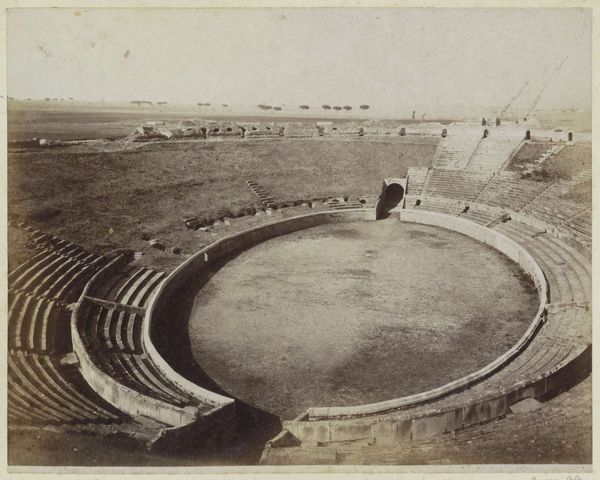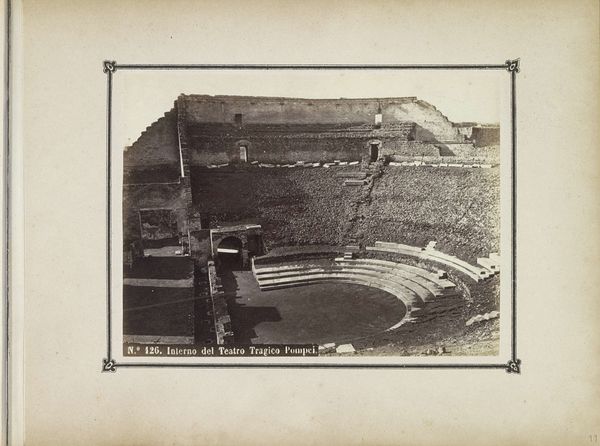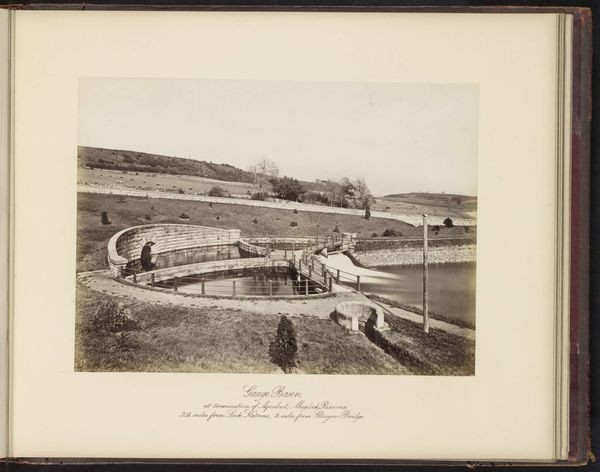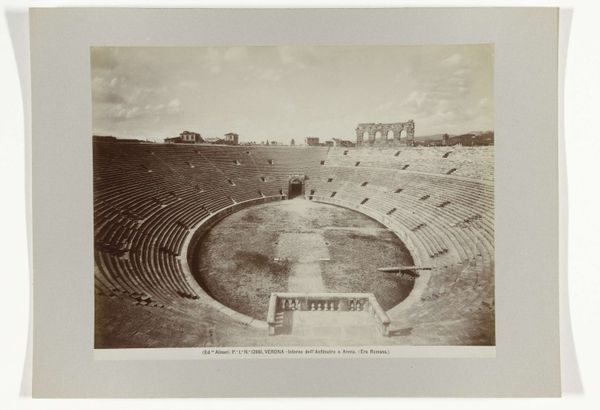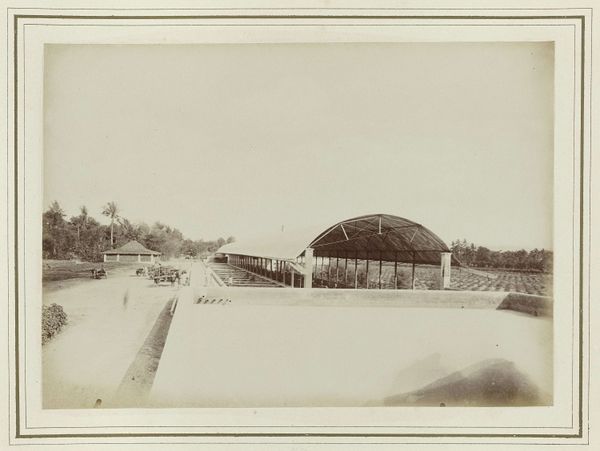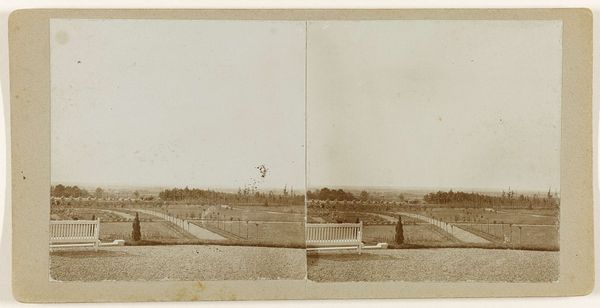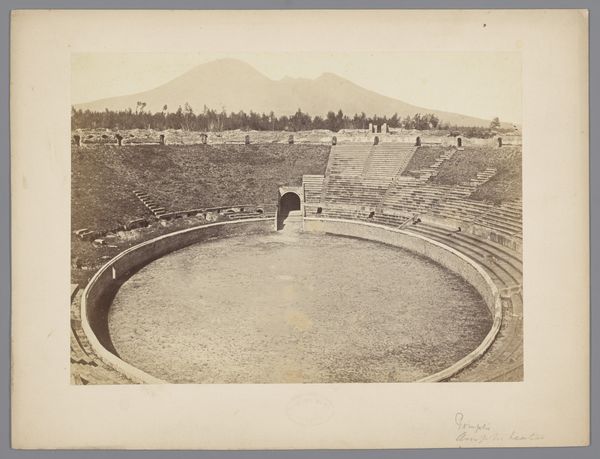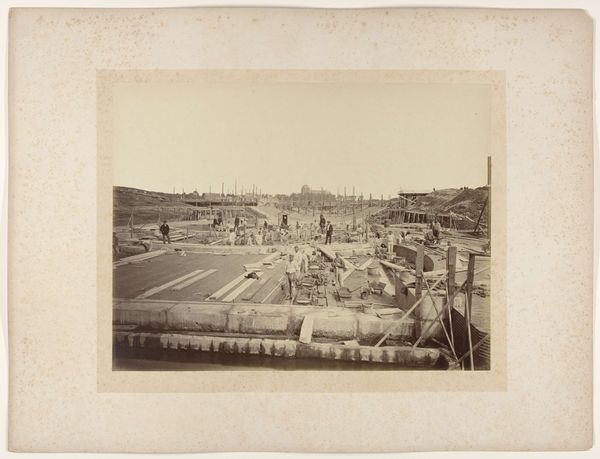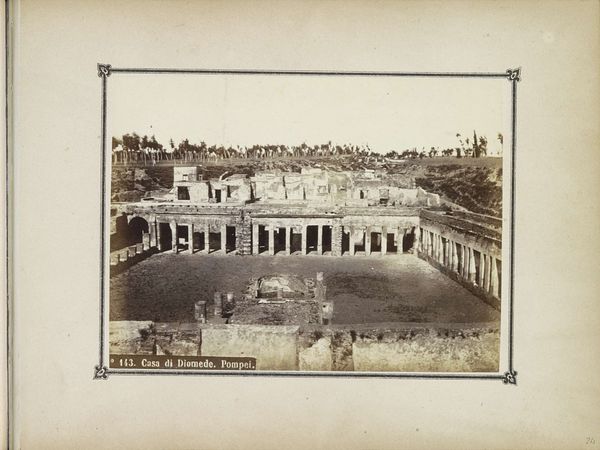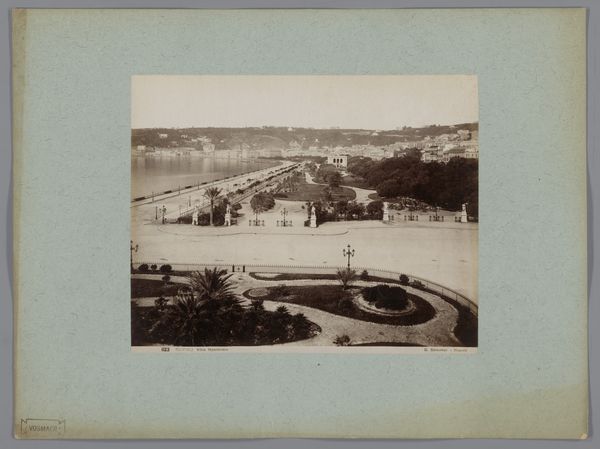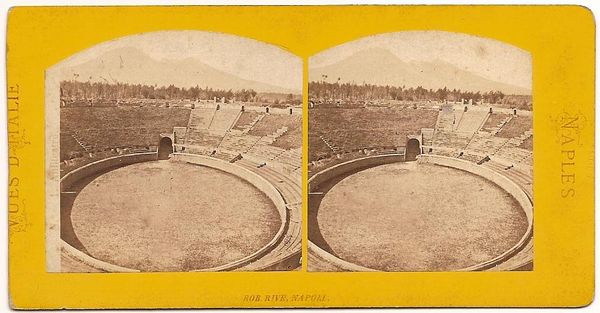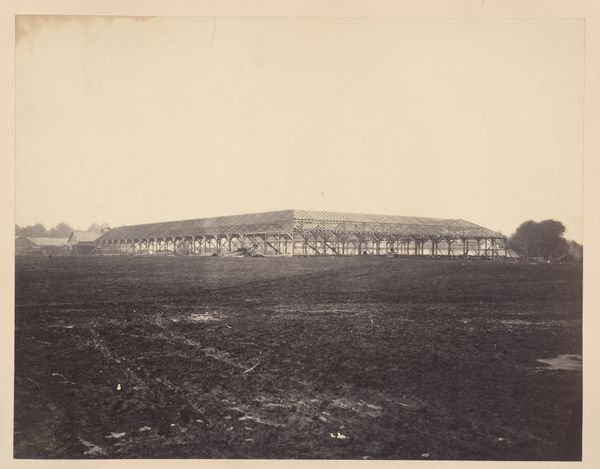
Interieur van het amfitheater in Pompeï met op de achtergrond de Vesuvius c. 1860 - 1900
0:00
0:00
#
pencil drawn
#
aged paper
#
toned paper
#
light pencil work
#
pencil sketch
#
sketch book
#
personal sketchbook
#
watercolour illustration
#
sketchbook art
#
watercolor
Dimensions: height 104 mm, width 143 mm
Copyright: Rijks Museum: Open Domain
Roberto Rive captured this albumen print of the amphitheater in Pompeii sometime in the mid-19th century, using a process that was gaining traction for its sharp detail. The albumen method involved coating paper with egg whites, then sensitizing it with silver nitrate. The resulting print, made from a glass negative, has a distinctive tonal range and smooth surface, quite unlike the digital photos we're used to today. Look closely, and you’ll see how this particular process lends a slightly sepia tone to the image, emphasizing the arena's stone construction. The image is so compelling because of the contrast it establishes, the amphitheater was built by hand with slave labor, while the photo's own production hinged on skilled labor of a different kind and new industrial methods. The photograph is as much a record of Pompeii as it is of the rapidly changing world that Rive inhabited. It’s a reminder that every image, every object, tells a story not only of its subject but of the means and the moment of its making.
Comments
No comments
Be the first to comment and join the conversation on the ultimate creative platform.
